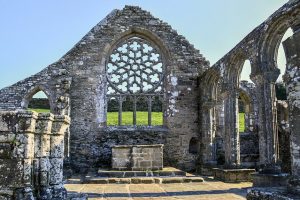
By: Dr. T. Y. Hiter
24 November, 2018
There was a fairly constant stream of “reformers” of the Church at Rome during the late 1400s. Now, remember, the 1300s had been an absolutely terrible time for almost everybody in Europe. The Middle Ages were drawing to a close (though probably nobody realized it at the time), and in virtually every way, life was just barely bearable. Wars swept across the whole continent, with the various armies killing, raping, burning and robbing among the local populace, wherever it was. It hardly mattered to a peasant whether the army stealing your pigs, kidnapping your son to be a soldier and your daughter for, well, your cook, perhaps, and burning your hovel was friendly or unfriendly: when it just went on and on, for over a hundred years, it got burdensome! In-between the various wars, waves of plague swept the continent, killing at least one-third of the population, and in many places more. There were three separate kinds of disease called “plague: bubonic, bubulic and pneumonic, and all were terrible. Imagine the same order of magnitude, today: Marshall County has 36,000 residents, more or less. Imagine 12,000 dying of disease, in this county, alone. Then imagine the same thing going on in Calloway, and Graves, and McCracken, and so on, all over the country. The Church was in little better shape. For seventy years, the Popes had been captive in France, and little concerned with running the Church, of which they were supposed to be the head, and when that ended, the Roman Pontiffs so wanted to re-establish their power in Rome that they set out to rebuild St. Peter’s Basilica, and in order to do so not only demanded heavy tithing from the people, they began to sell outright everything that they could muster, including salvation, itself.
Into this mix of terror and misery came a list of reformers, most Roman Catholic priests, but some lay thinkers, as well. Peter Waldo, an Italian founded the Waldensians; John Hus, a Bohemian started the Hussites, and Giarolo Savanarola, another Italian, started his own movement. All were declared heretical by the Church, and the followers of each were routinely burned at the stake or otherwise murdered for their faith. Each of these (and some others), in trying to establish their own faith, ended up involved in yet another of the various wars discussed earlier. And, none of them lasted. The truth was that the utter misery of war and disease were such that religious persecution took a back seat until 1517. In that year, Martin Luther launched a series of reforms that finally did break the grip of the Roman Church on European Christians. Luther, of course, was followed by Calvin and Zwingli, with their “Reformed” Church (which became called “Huguenots” in France and Holland), the English, led by King Henry VIII and Thomas Cranmer, who established the Anglican Church, and John Knox, a Scottish Catholic who became an Anglican priest and then a Calvinist, who established the Presbyterian Church.
So: in 1500, there was only the Roman Catholic Church, and by 1600, there were four: Rome, Lutheran, Calvinist (including Reformed, Presbyterian and Huguenot), and Anglican. But, the Protestant Reformation didn’t end there. In fact, it was just getting started! A lot of those little local movements out in the continent were still there, and still interested in reform, but not necessarily taken with any of the three great strands of Protestantism.
